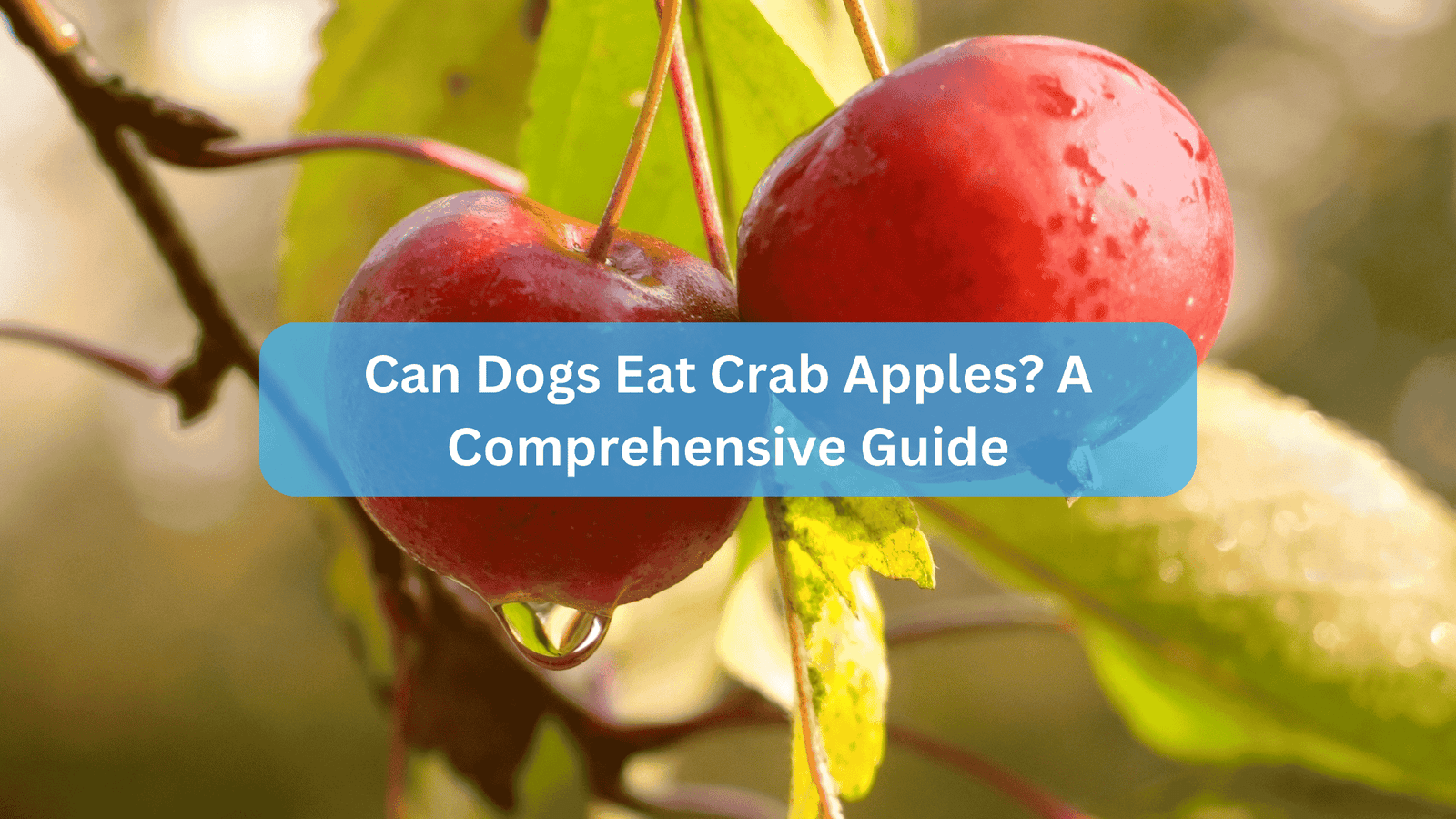When it comes to our furry friends, pet owners are often faced with questions about what is safe for their dogs to eat. One such question that frequently arises is: Can dogs eat crab apples? This guide aims to provide an in-depth look at crab apples, their safety for dogs, potential health implications, and best practices for pet owners.
What Are Crab Apples?
Crab apples, scientifically known as Malus sylvestris, are small apples that are generally more tart than the larger varieties commonly found in grocery stores.
They grow on trees that can be found in many neighborhoods and parks, especially during the fall season when they drop from the trees.
While they may be a delightful snack for humans, the question remains whether they are suitable for our canine companions.
Nutritional Profile of Crab Apples
Before delving into whether dogs can eat crab apples, it’s essential to understand their nutritional profile:
- Calories: Low-calorie fruit
- Sugar: Contains natural sugars, but less than regular apples
- Fiber: Good source of dietary fiber
- Vitamins and Minerals: Contains Vitamin C and various antioxidants
Can Dogs Eat Crab Apples? The Short Answer
Yes, dogs can eat crab apples, but with caution. The flesh of the fruit is generally safe for dogs in small amounts.
However, the seeds, leaves, and stems contain cyanogenic glycosides, which can be harmful if consumed in large quantities.
Why Are Crab Apples Considered Safe for Dogs?
While it’s true that crab apple seeds contain trace amounts of cyanide, a dog would need to consume a significant number of seeds—approximately 200 apples worth—to experience toxicity.
Therefore, while crab apples are not entirely without risk, they are generally considered non-toxic when consumed in moderation.
Risks of Feeding Crab Apples to Dogs
Despite their relative safety, there are several risks associated with feeding crab apples to dogs:
- Cyanide Poisoning: As mentioned earlier, the seeds contain cyanogenic compounds. If a dog consumes a large quantity of seeds after chewing them thoroughly, it could lead to cyanide poisoning.
- Digestive Issues: The high fiber content may upset a dog’s stomach if consumed in large quantities. Symptoms can include diarrhea or vomiting.
- Choking Hazard: Whole crab apples or large pieces may pose a choking hazard for smaller dogs.
- Contamination: Fallen crab apples may be contaminated with mold or pesticides if they have been on the ground for too long.
How to Safely Introduce Crab Apples to Your Dog’s Diet
If you decide to allow your dog to try crab apples, follow these guidelines:
- Start Small: Introduce a small piece of the flesh first to see how your dog reacts.
- Remove Seeds and Stems: Always remove the seeds and stems before offering any part of the fruit.
- Monitor Reactions: Keep an eye on your dog after they consume crab apple flesh for any signs of digestive upset.
- Limit Quantity: Treat crab apples as an occasional snack rather than a regular part of your dog’s diet.
Frequently Asked Questions (FAQs)
What should I do if my dog eats a whole crab apple?
If your dog consumes a whole crab apple or a significant number of seeds, monitor them closely for symptoms like vomiting or lethargy. Contact your veterinarian if you notice any concerning symptoms.
Are there any benefits to feeding my dog crab apples?
Crab apples can provide some vitamins and minerals beneficial for your dog’s health when given in moderation. They also offer hydration due to their water content.
Can all dogs eat crab apples?
Most dogs can eat small amounts of crab apple flesh safely; however, dogs with sensitive stomachs or specific health conditions may need to avoid them altogether.
Are there better alternatives to crab apples?
Yes! There are many fruits that are safer and more nutritious for dogs, such as blueberries, bananas, and carrots.
Also Read: Can You Use Human Ear Drops on Dogs? A Comprehensive Guide
Also Read: Is Bird of Paradise Poisonous to Dogs?
Conclusion
In summary, while dogs can eat crab apples, it is crucial to approach this fruit with caution.
The flesh is generally safe in moderation; however, the seeds and other parts of the plant pose risks that should not be ignored.
Always prioritize your dog’s health by consulting with a veterinarian before introducing new foods into their diet.
By understanding the implications of feeding your dog crab apples and following best practices for safety, you can make informed decisions that contribute positively to your pet’s well-being.
Sources:
- https://www.petmd.com/dog/nutrition/can-dogs-eat-apples
- https://www.dutchshepherdforum.com/viewtopic.php?t=103







